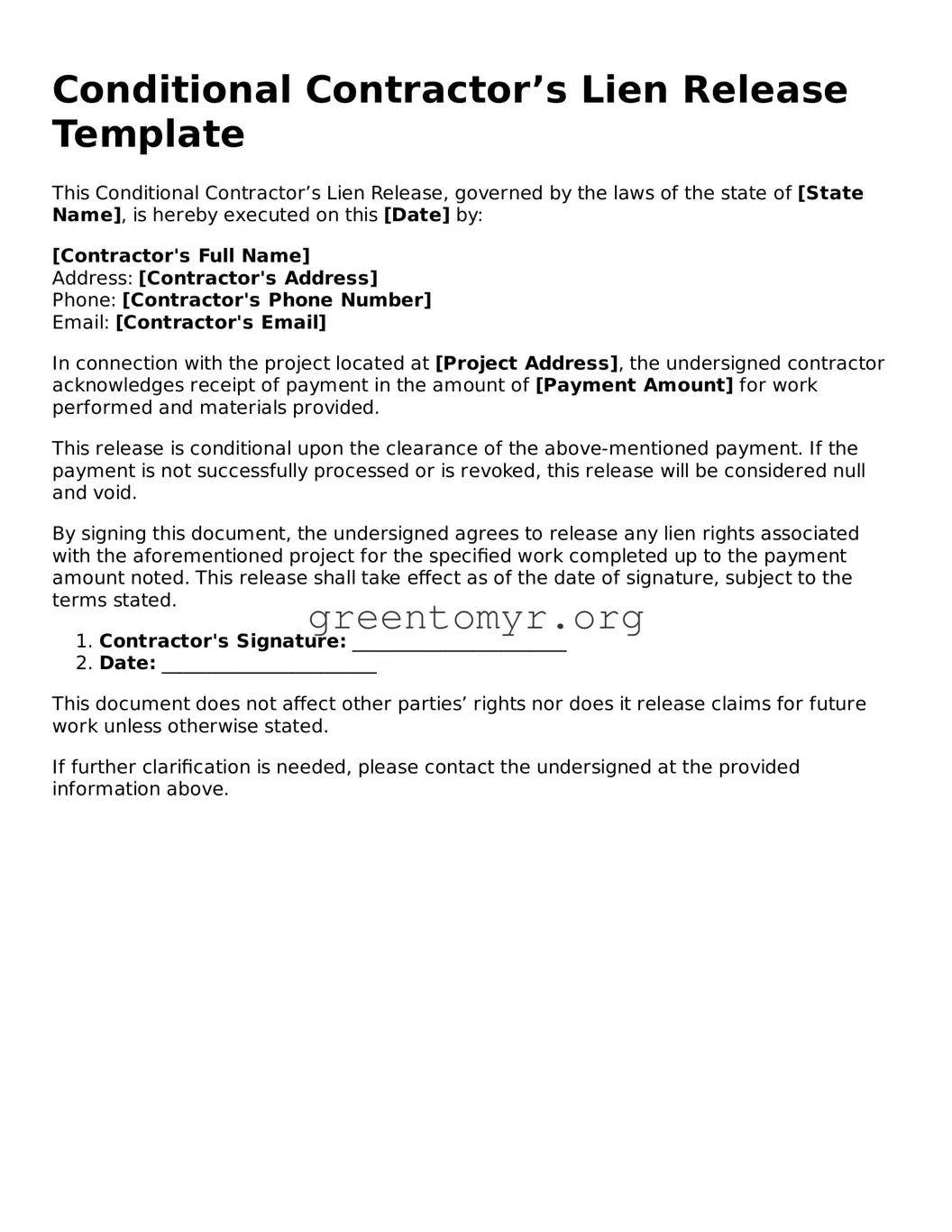Conditional Contractor’s Lien Release Template
This Conditional Contractor’s Lien Release, governed by the laws of the state of [State Name], is hereby executed on this [Date] by:
[Contractor's Full Name]
Address: [Contractor's Address]
Phone: [Contractor's Phone Number]
Email: [Contractor's Email]
In connection with the project located at [Project Address], the undersigned contractor acknowledges receipt of payment in the amount of [Payment Amount] for work performed and materials provided.
This release is conditional upon the clearance of the above-mentioned payment. If the payment is not successfully processed or is revoked, this release will be considered null and void.
By signing this document, the undersigned agrees to release any lien rights associated with the aforementioned project for the specified work completed up to the payment amount noted. This release shall take effect as of the date of signature, subject to the terms stated.
- Contractor's Signature: _______________________
- Date: _______________________
This document does not affect other parties’ rights nor does it release claims for future work unless otherwise stated.
If further clarification is needed, please contact the undersigned at the provided information above.
